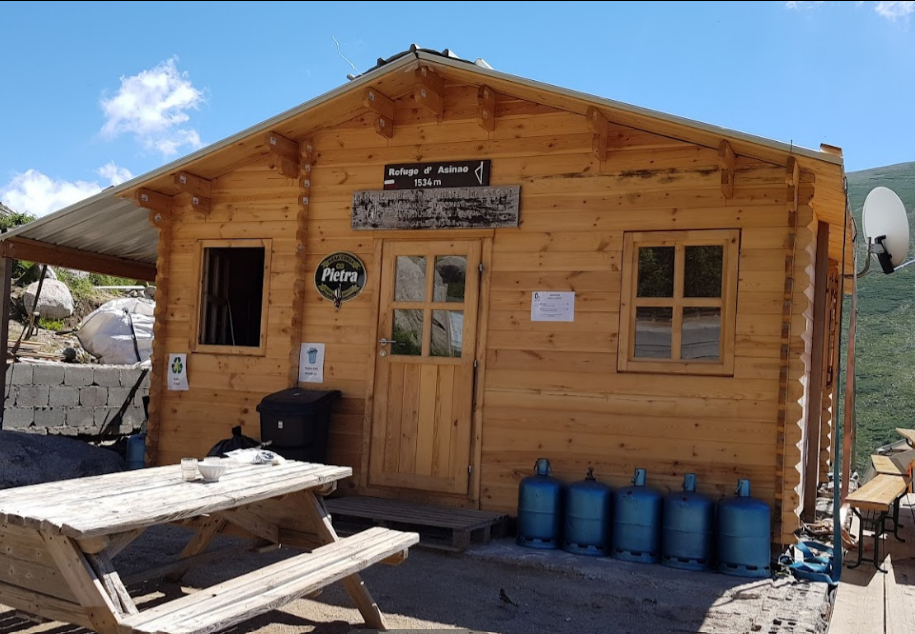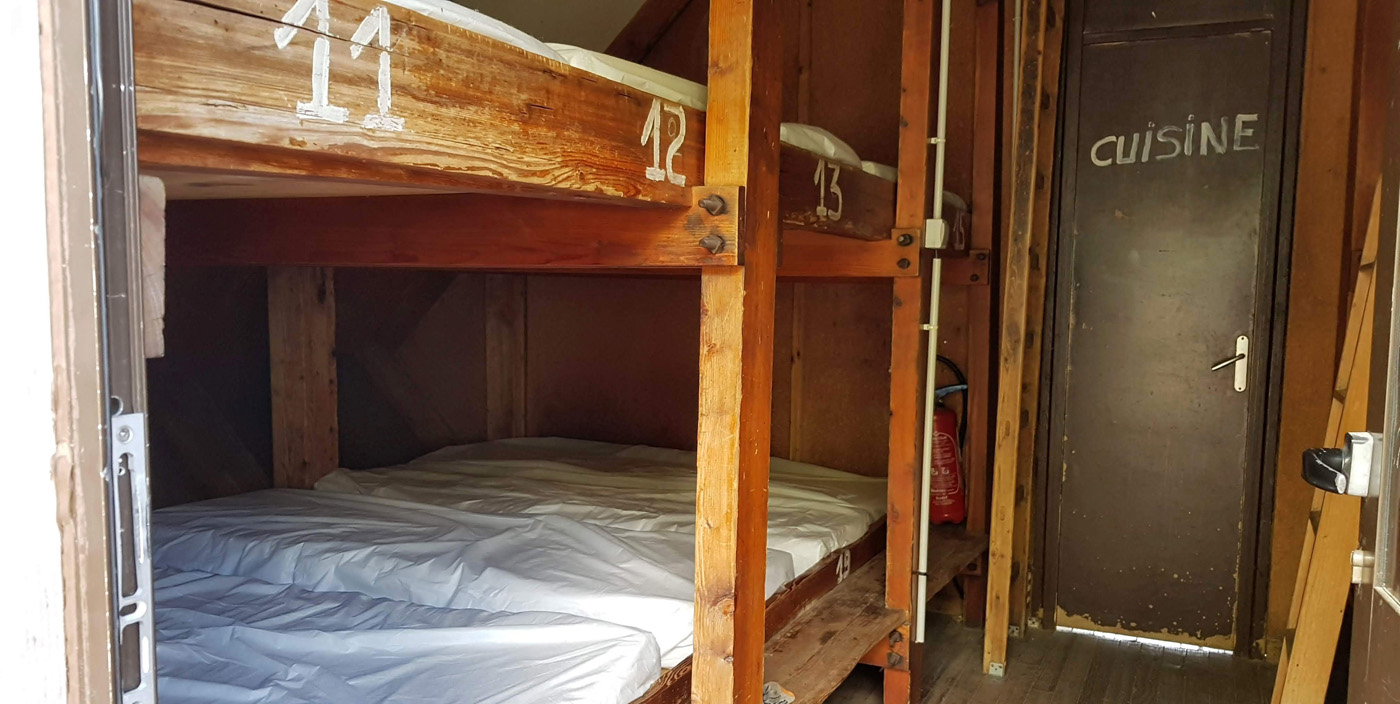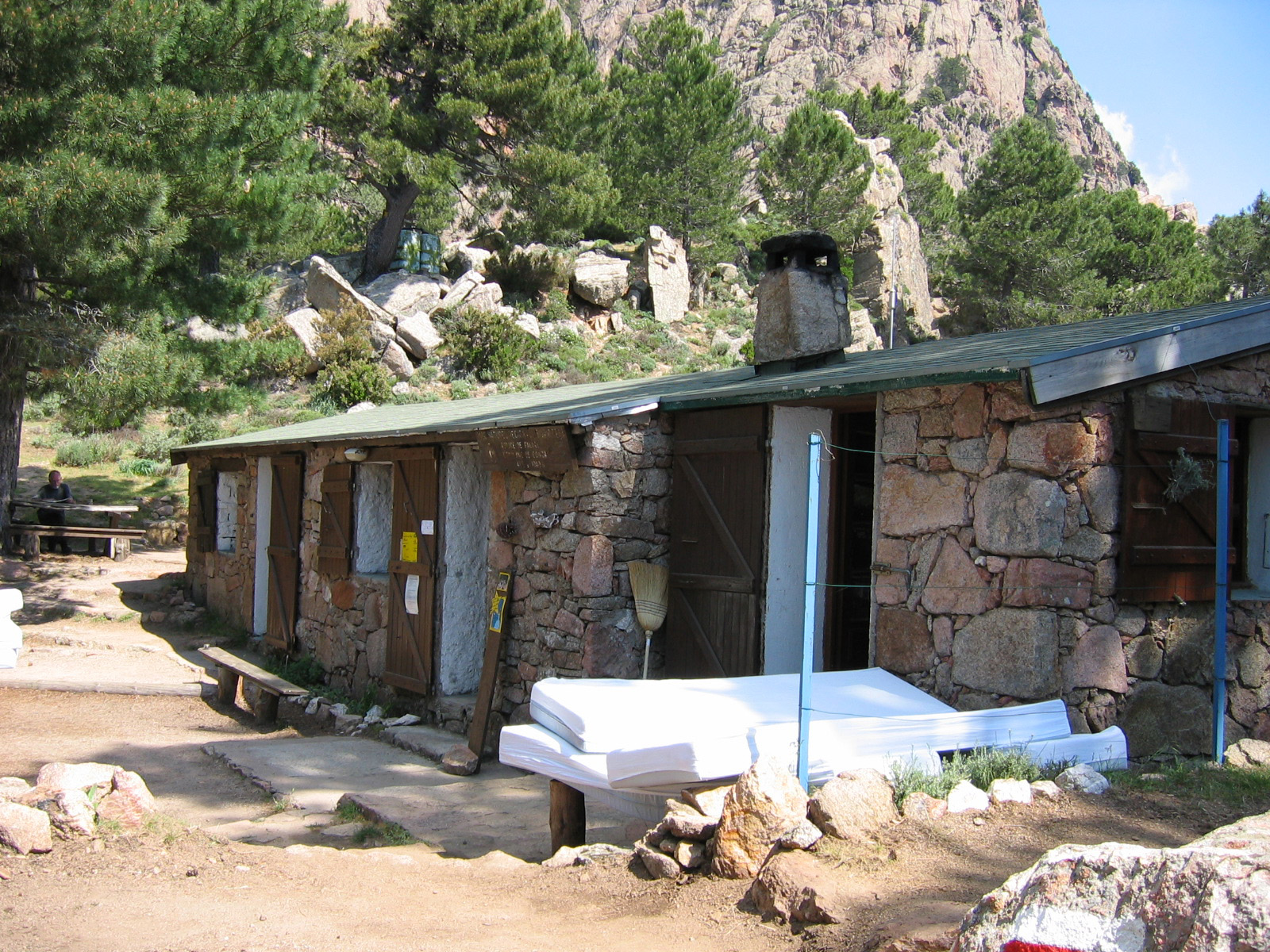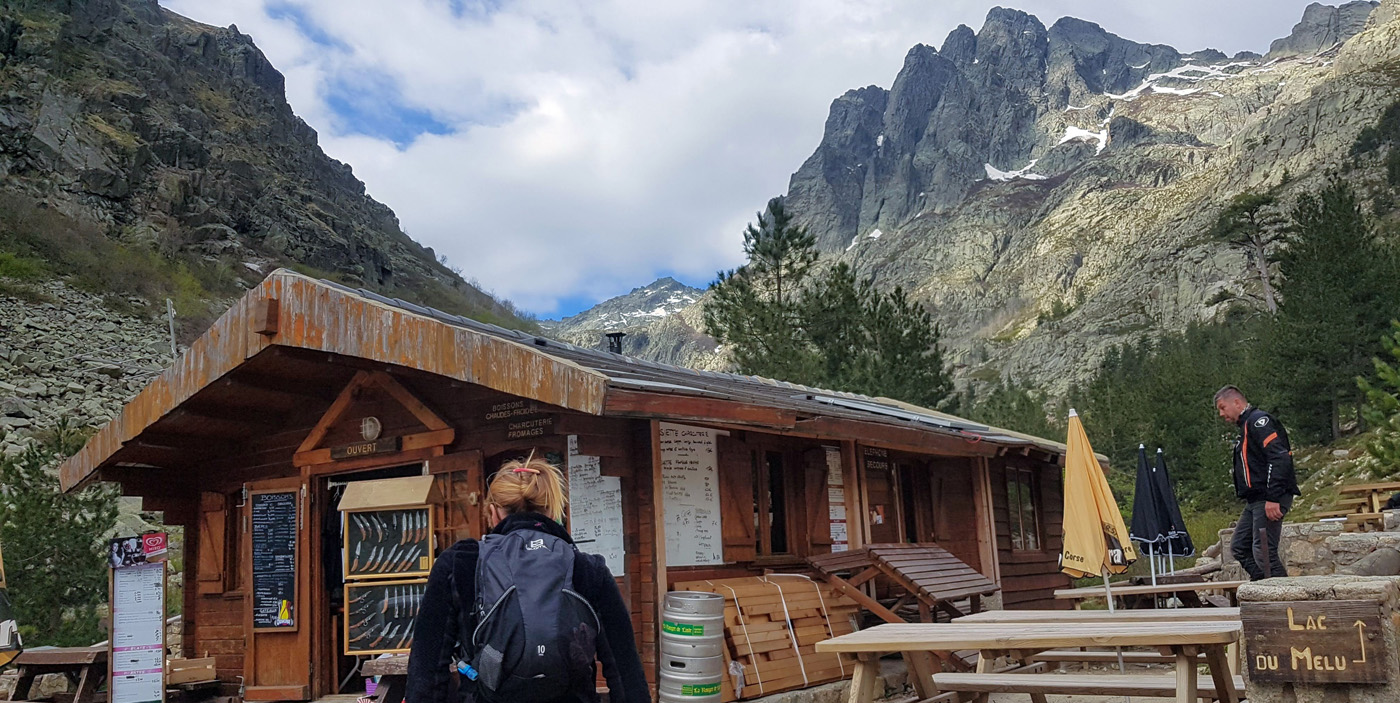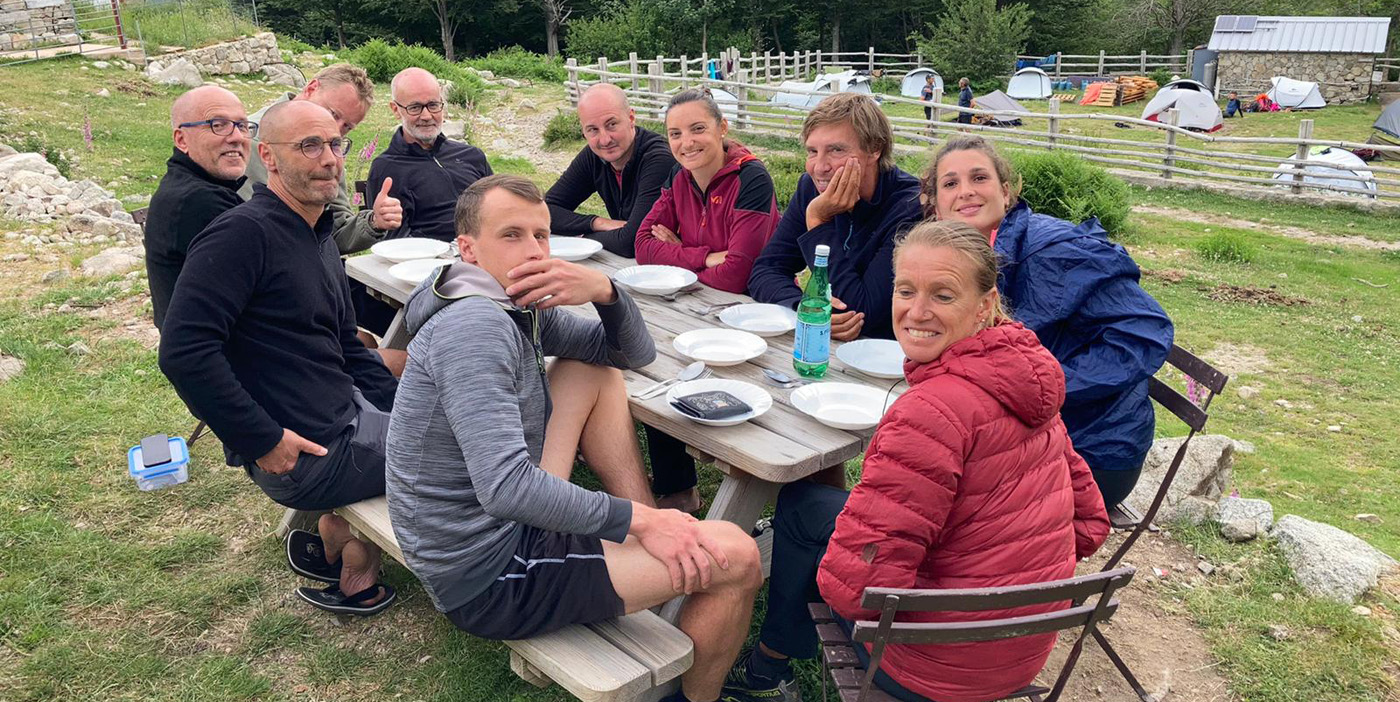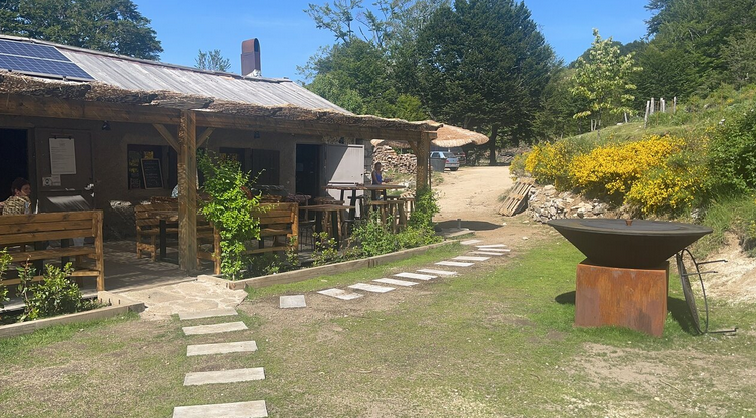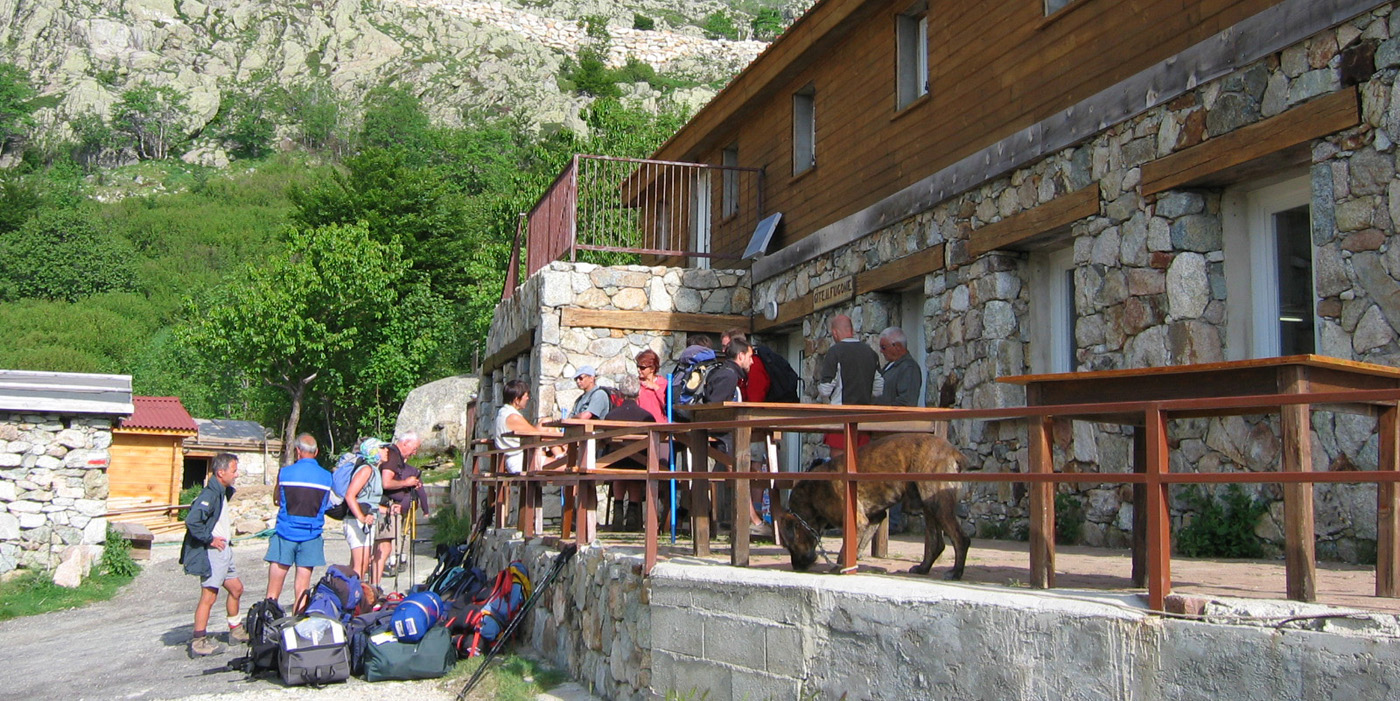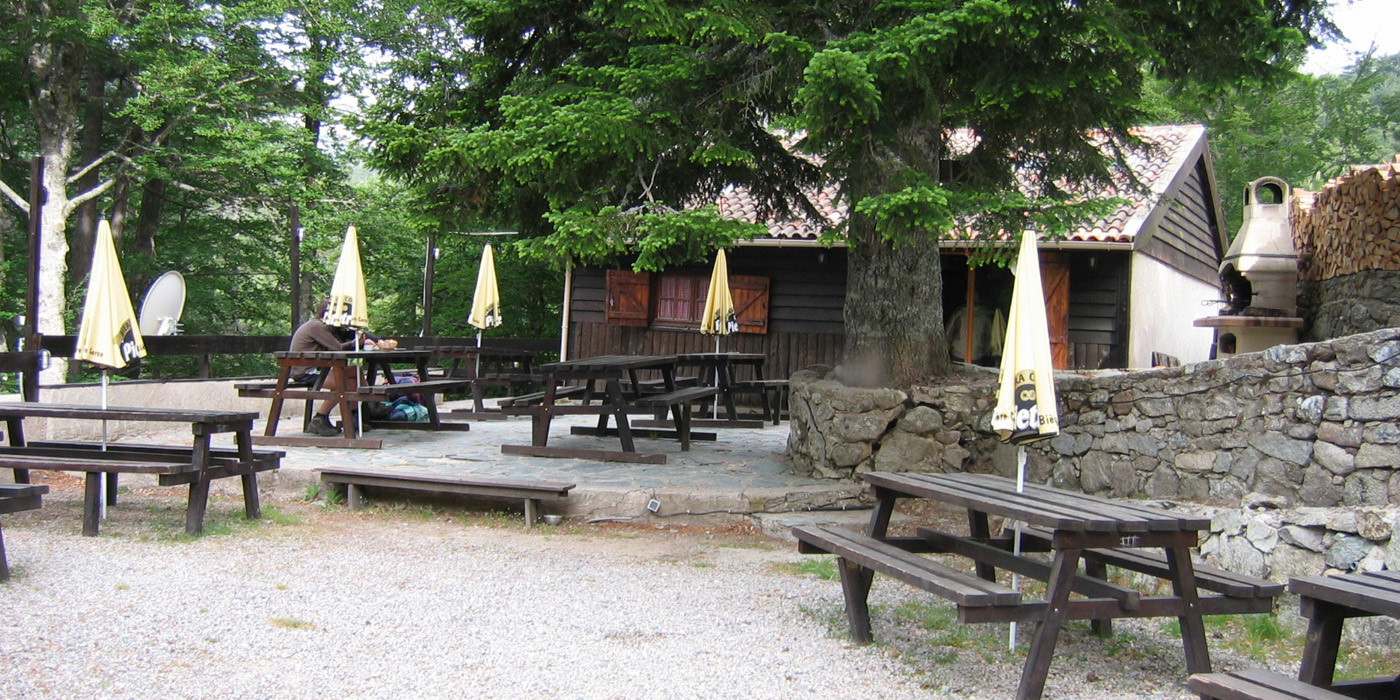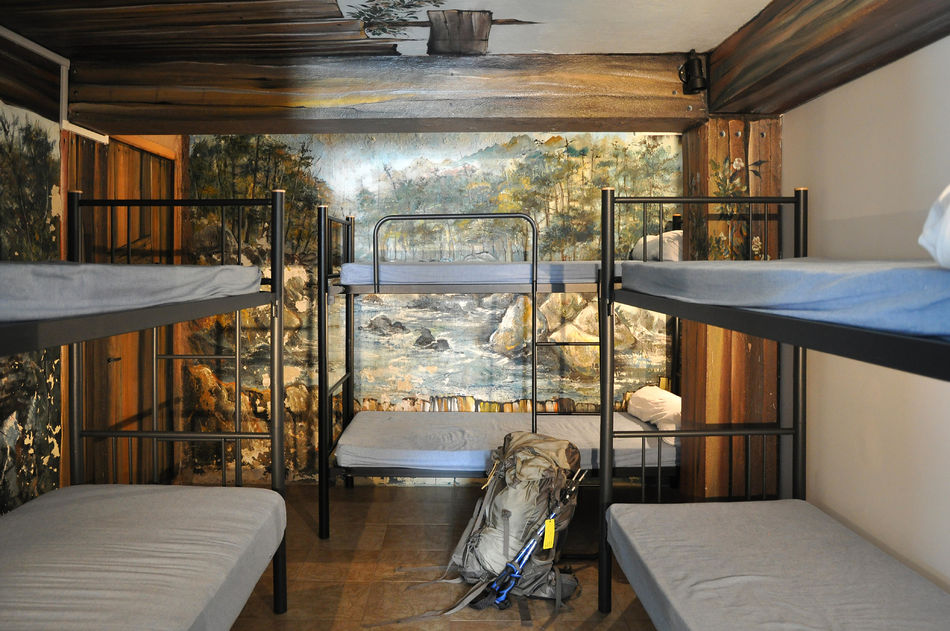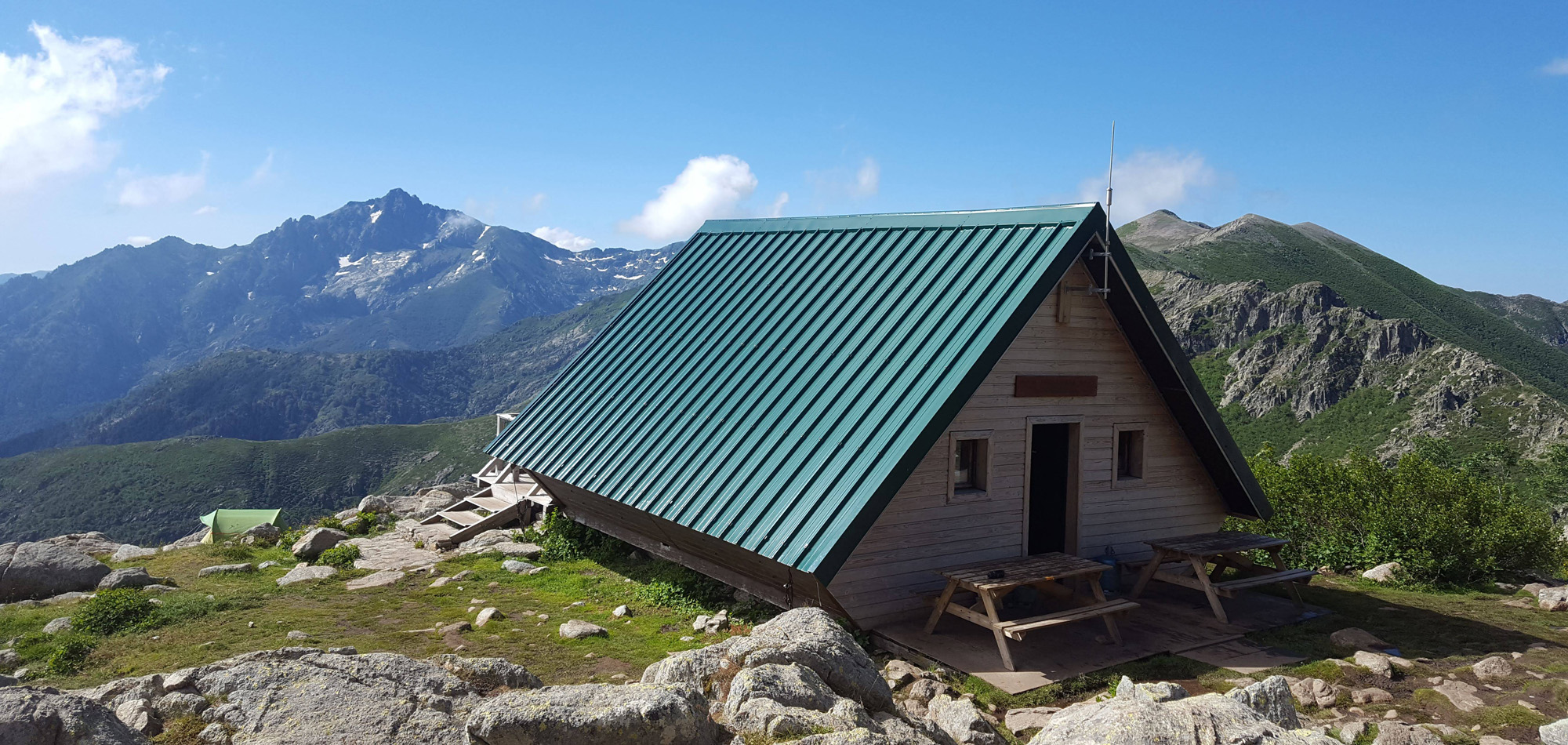
Accommodation along the GR20 route is generally fairly basic. However, there are a few sheepfolds, gîtes and private hotels along the route, which generally offer more comfort without necessarily being more expensive. We sometimes can reserve the trek accommodation at nearby Mountain hotels, off trail and provide a short transfer to the trailhead when necessary.
The refuges of the PRNC
On each stage of the GR20, there is a refuge managed by the Corsican Regional Nature Park, offering overnight accommodation in dormitories or tents in equipped bivouac areas. The refuges are open all year round, but are only manned from June to September. In winter, the refuges remain open but unmanned, and services such as gas, electricity and water may be cut off.
These refuges are non-smoking and dogs are not allowed. Quiet is required from 10pm and hikers are asked to leave the buildings by 9am. However, it should be noted that some hikers prefer to go to bed early and get up as early as 3am!
All refuges are equipped with toilets, a kitchen with gas, and communal showers with cold water, as there is no electricity. They also offer a radio assistance and security service, as well as an outdoor water point. It is possible to eat and drink on site. Advance booking is compulsory.
The dormitories
Each refuge has around thirty beds that can accommodate between 20 and 40 people. These are large dormitories with wooden bunks and thick mattresses. It is important to note that blankets are not provided, so a sleeping bag is essential.
Bivouacs
It is possible to sleep in tents, equipped with mattresses and already erected, in bivouac areas located around the refuges. People camping nearby have access to toilets and showers. However, it is important to note that night-time temperatures in Corsica can be very low, even in August, so it is advisable to bring a good sleeping bag.
NB: It should also be noted that camping in the wild is prohibited throughout the Parc Naturel Régional de Corse (PNRC).
Meals
All refuges offer at least one hot meal in the evening and have a stock of basic food and drink, although the choice can vary from place to place. A small grocery shop is usually available on site.
List of GR20 refuges
- Refuge Ortu di u Piobbu (1520 m) - bivouac only - GPS : 42.465281,8.906944
- Refuge de Carrozzu (1270 m) - 36 places - GPS : 42.426282,8.900496
- Refuge d’Ascu Stagnu (1420 m) - 32 places - GPS : 42.403518,8.922313
- Refuge de Tighjettu (1683 m) - 48 places - GPS : 42.362276,8.908821
- Refuge de Ciottulu (1997 m) - 26 places - GPS : 42.335008,8.868127
- Refuge de Manganu (1600 m) - 26 places - GPS : 42.219876,8.980447
- Refuge de Petra Piana (1842 m) - 28 places - GPS : 42.198125,9.052298
- Refuge de L'onda (1430 m) - 28 places - GPS : 42.152259,9.072458
- Vizzavona (1842 m) - structures privées : hôtel, gite, bivouac sur place
- Capanelle (1586 m) - gîte privé 60 places - GPS : 42.077281; 9.150242
- Refuge de Prati (1822 m) - 32 places - GPS : 42.008416,9.218246
- Refuge d'Usciolu (1750 m) - 31 places - GPS : 41.934935,9.205935
- Plateau du Cuscionu - several private structures on the plateau (Matalza, Croci, Bassetta)
- Refuge d'Asinao (1536 m) - bivouac only - GPS : 41.841103,9.214518
- Refuge de Paliri (1055 m) - 24 places - GPS : 41.794155,9.259590
Summary of services in the refuges
- Nights in mixed dormitories with bunk beds and foam mattresses. No blankets are provided, so bring your own sleeping bag.
- Overnight in tents in the bivouac areas, including a tent for two and inflatable mattresses.
- Turkish-style dry toilets are sometimes in short supply, which can lead to queues during busy periods. You will need to bring your own toilet paper.
- Solar-heated hot showers at certain stages, but cold most of the time.
- Source of drinking water inside or outside the building.
- Grocery service with varying levels of availability, depending on the refuge.
- Warden on duty from May to October.
- Kitchen and dining room with tables, pots and pans, knives and forks, crockery and basic gas cookers (inside and outside).
- On-site catering service with evening meal, breakfast, picnic, drinks for sale.
- Recycling bins.
- Outdoor terrace with indoor common room.
The sheepfolds
As well as refuges, there are also sheepfolds along the route. These are private establishments offering accommodation for hikers (overnight stay and meals). They have a bivouac area, hot showers, toilets and a catering service. The shepherd's huts are run by shepherd's families who have handed down these structures from generation to generation.
The tents in the shepherd's huts sleep two people and are equipped with mattresses. You will have access to communal hot-water showers, and in some places you can recharge your electronic devices.
Hotels and gîtes
At certain stages of the GR20 accessible by road, notably Calenzana, Asco, Col de Vergio, Vizzavona, Capanelle, Col de Verde, Col de Bavella and Conca, there are stopover gîtes and hotels, sometimes offering bed and breakfast accommodation. These gîtes offer rooms for between 2 and 8 people, so hikers can enjoy more comfortable facilities, hot showers and meals in restaurants or dining rooms. These accommodations are accessible while remaining on the GR20.
For those looking for a little more comfort, we have created a selection of GR20 Holidays with accommodation entirely in hotels or private rooms. The accommodation is not on the GR20, but in half a dozen villages within two or three hours walk of the GR20. On some stages there will be transfers to and from the accommodation for the start and end of the walk.
We have carefully selected the most beautiful and emblematic sections for you. This route remains sporty and requires stamina and good physical condition.
All you need to know about the GR20
FAQ
Refuges on the GR20 often have showers, which are usually cold except in rare cases. Towels or flannels can be used with a little water for a quick clean-up. Some hikers choose to heat a little water on a gas cooker to wash themselves, although this requires more effort and equipment. For a quick, water-free solution, using wet wipes can be handy.
It's important to note that, even with the use of biodegradable soaps, washing in natural waterways such as streams or mountain lakes is not recommended to avoid pollution. Respect for the environment is paramount.
Most of the refuges on the GR20 are fairly old and of limited capacity. They are often built of granite stone. To accommodate the large number of hikers who cannot stay in the dormitories, bivouac areas are set up nearby. It should be noted that the sanitary facilities in some refuges are not always adequate during busy periods on the GR20.
Yes, it is quite possible to sleep in your own tent on the GR20. This means carrying it with you throughout the trek, which can significantly increase the weight of your rucksack. The weight of your tent is therefore an important factor to consider. You should also make sure that your tent is adapted to the variable and sometimes difficult weather conditions of the Corsican mountains. It's important to note that wild camping is prohibited outside the areas designated by the Corsican Regional Nature Park.
The acronym GR20 stands for "Grande Randonnée numéro 20". So the GR20 is the twentieth long-distance hiking trail. Prior to 1970, Corsica was effectively department number 20 in France, which coincides with the number assigned to this trail in the list of 370 long-distance hiking trails.


